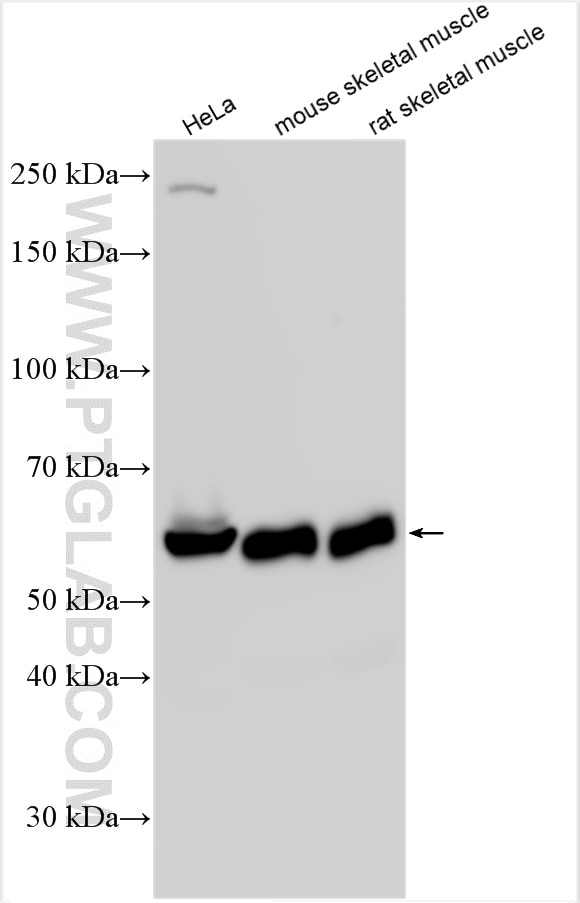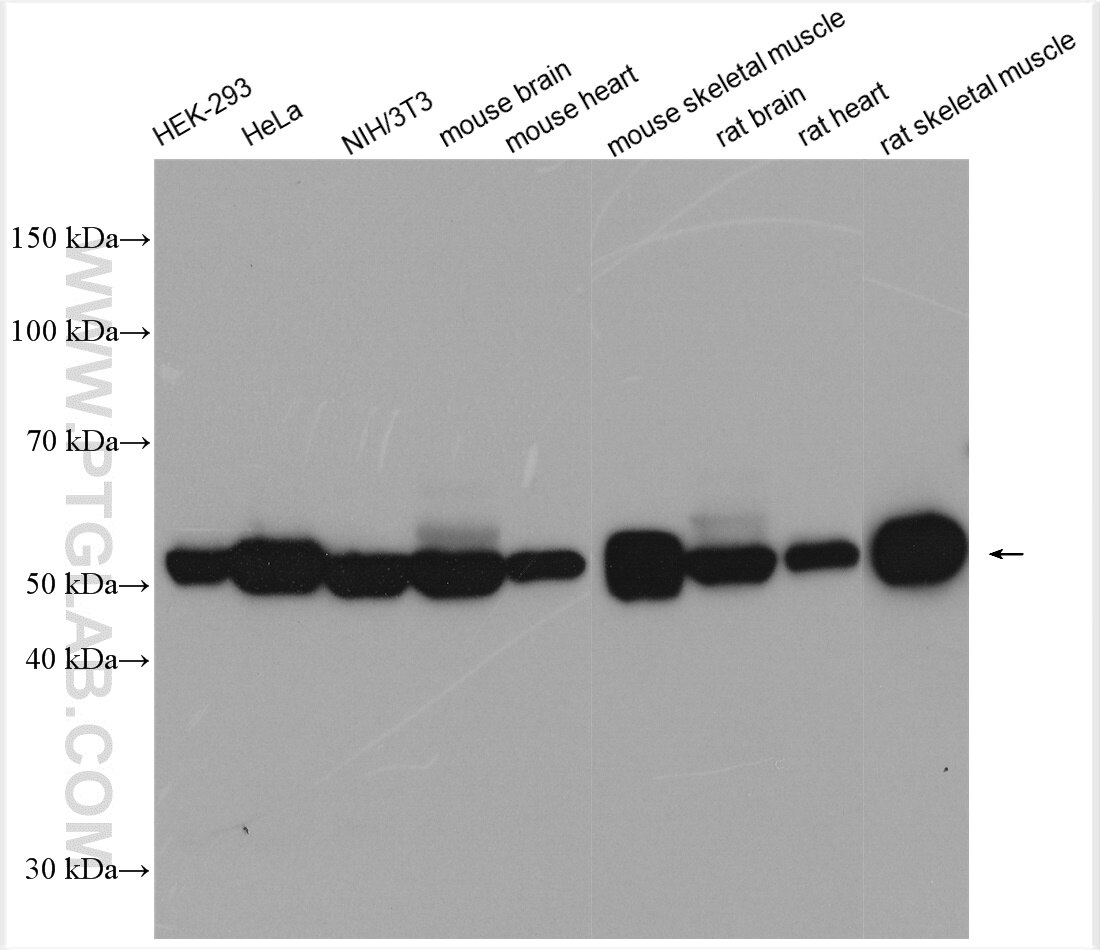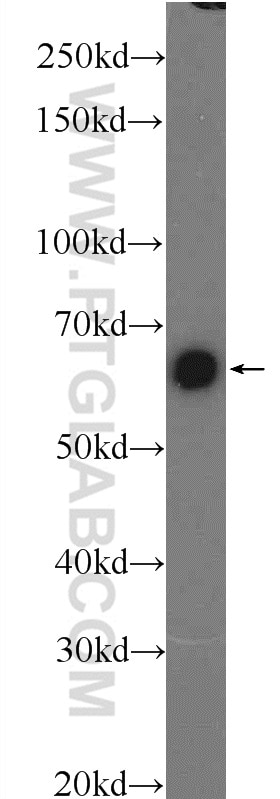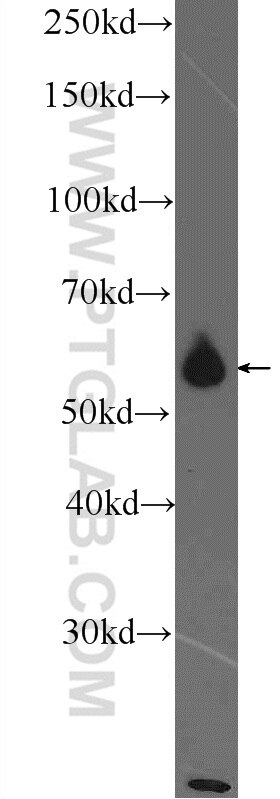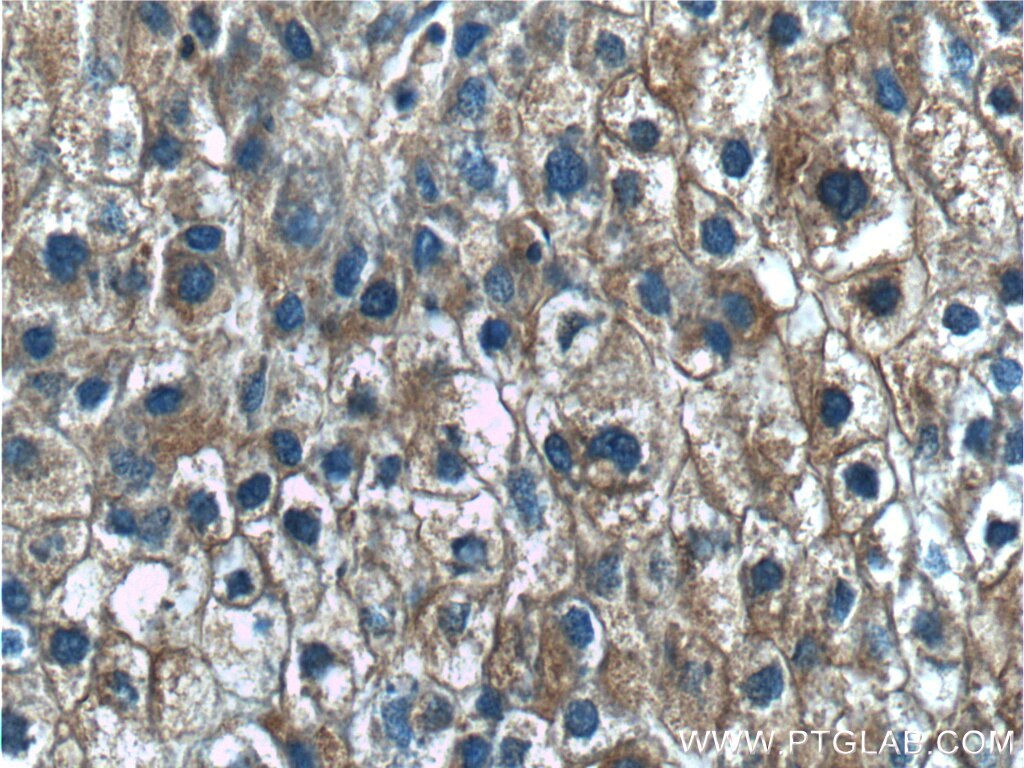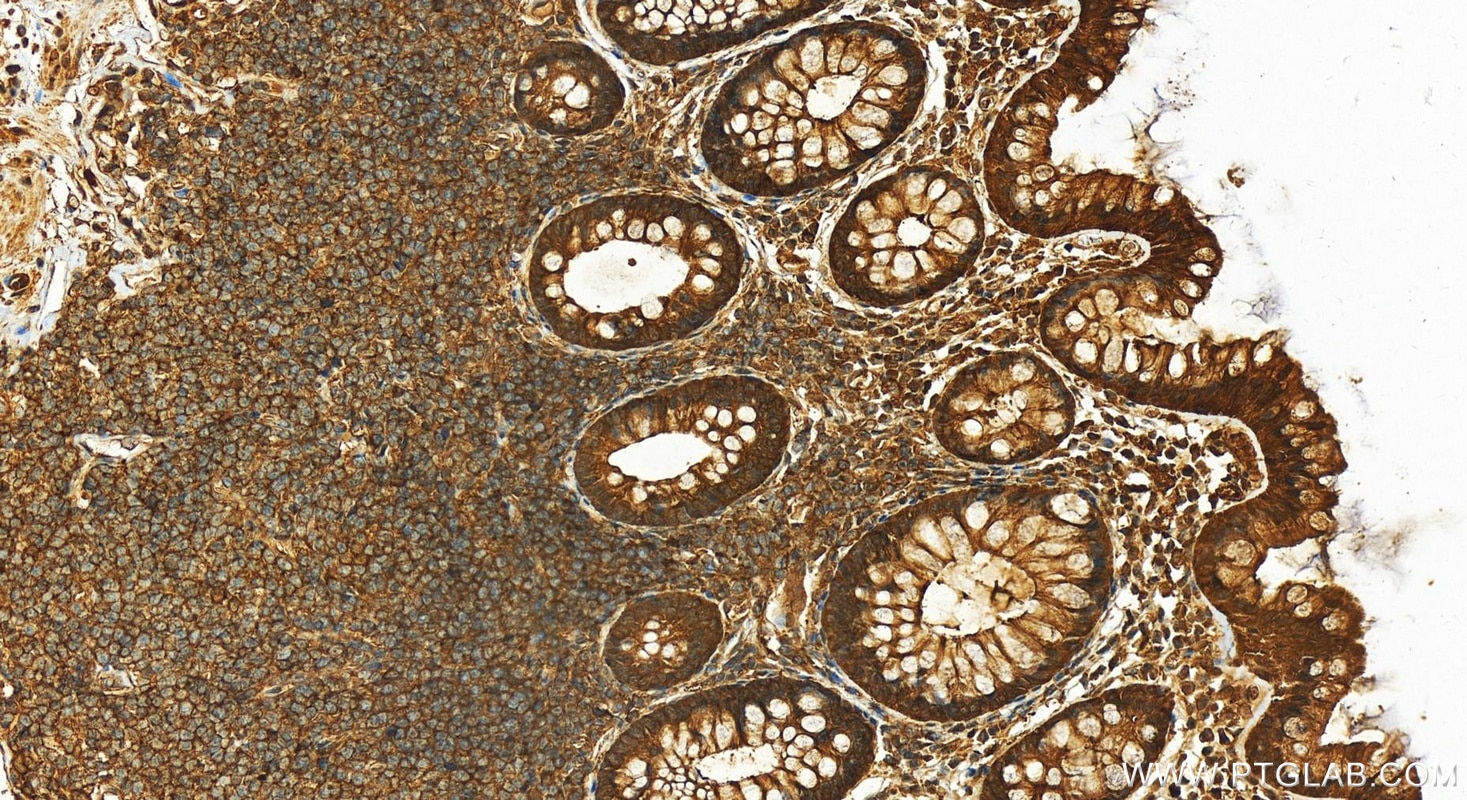- Phare
- Validé par KD/KO
Anticorps Polyclonal de lapin anti-PKM
PKM Polyclonal Antibody for WB, IHC, IF/ICC, ELISA
Hôte / Isotype
Lapin / IgG
Réactivité testée
Humain, rat, souris
Applications
WB, IHC, IF/ICC, IP, CoIP, ELISA
Conjugaison
Non conjugué
N° de cat : 25659-1-AP
Synonymes
Galerie de données de validation
Applications testées
| Résultats positifs en WB | cellules HeLa, cellules COLO 320, cellules HEK-293, cellules KEK293, cellules MCF-7, cellules NIH/3T3, cellules SMMC-7721, tissu cardiaque de rat, tissu cardiaque de souris, tissu cérébral de rat, tissu cérébral de souris, tissu de muscle squelettique de rat, tissu de muscle squelettique de souris |
| Résultats positifs en IHC | tissu de cancer du foie humain, human normal colon il est suggéré de démasquer l'antigène avec un tampon de TE buffer pH 9.0; (*) À défaut, 'le démasquage de l'antigène peut être 'effectué avec un tampon citrate pH 6,0. |
| Résultats positifs en IF/ICC | cellules HeLa, |
Dilution recommandée
| Application | Dilution |
|---|---|
| Western Blot (WB) | WB : 1:1000-1:4000 |
| Immunohistochimie (IHC) | IHC : 1:100-1:400 |
| Immunofluorescence (IF)/ICC | IF/ICC : 1:200-1:800 |
| It is recommended that this reagent should be titrated in each testing system to obtain optimal results. | |
| Sample-dependent, check data in validation data gallery | |
Applications publiées
| WB | See 6 publications below |
| IP | See 2 publications below |
| CoIP | See 2 publications below |
Informations sur le produit
25659-1-AP cible PKM dans les applications de WB, IHC, IF/ICC, IP, CoIP, ELISA et montre une réactivité avec des échantillons Humain, rat, souris
| Réactivité | Humain, rat, souris |
| Réactivité citée | Humain, souris |
| Hôte / Isotype | Lapin / IgG |
| Clonalité | Polyclonal |
| Type | Anticorps |
| Immunogène | PKM Protéine recombinante Ag20270 |
| Nom complet | PKM pyruvate kinase, muscle |
| Masse moléculaire calculée | 58 kDa |
| Poids moléculaire observé | 58 kDa |
| Numéro d’acquisition GenBank | BC000481 |
| Symbole du gène | PKM |
| Identification du gène (NCBI) | 5315 |
| Conjugaison | Non conjugué |
| Forme | Liquide |
| Méthode de purification | Purification par affinité contre l'antigène |
| Tampon de stockage | PBS with 0.02% sodium azide and 50% glycerol |
| Conditions de stockage | Stocker à -20°C. Stable pendant un an après l'expédition. L'aliquotage n'est pas nécessaire pour le stockage à -20oC Les 20ul contiennent 0,1% de BSA. |
Informations générales
PKM, also named as OIP3, PK2, PK3, PK-M1/2, p58, THBP1, CTHBP and Tumor M2-PK, belongs to the pyruvate kinase family. It is glycolytic enzyme that catalyzes the transfer of a phosphoryl group from phosphoenolpyruvate (PEP) to ADP, generating ATP. It stimulates POU5F1-mediated transcriptional activation. PKM plays a general role in caspase independent cell death of tumor cells. PKM has 2 isoforms named as PKM1/M2. The activity of the M2 isoform (but not the M1 isoform) can be inhibited by tyrosine kinase signalling in tumourcells. The primary pyruvate kinase isoform before tumour development is PK-M1; however, the primary isoform from four independent tumours is PK-M2.(PMID:18337823). This antibody can recognize both PK-M1 and PK-M2.
Protocole
| Product Specific Protocols | |
|---|---|
| WB protocol for PKM antibody 25659-1-AP | Download protocol |
| IHC protocol for PKM antibody 25659-1-AP | Download protocol |
| IF protocol for PKM antibody 25659-1-AP | Download protocol |
| Standard Protocols | |
|---|---|
| Click here to view our Standard Protocols |
Publications
| Species | Application | Title |
|---|---|---|
EMBO Rep Histone acetyltransferase 1 is a succinyltransferase for histones and non-histones and promotes tumorigenesis. | ||
Cell Signal Annexin A2 binds the 3'-UTR of H2AX mRNA and regulates histone-H2AX-derived hypoxia-inducible factor 1-alpha activation | ||
Oncogene HMGB1/SET/HAT1 complex-mediated SASH1 repression drives glycolysis and metastasis in lung adenocarcinoma | ||
Int J Mol Sci Acetyltransferase P300 Regulates Glucose Metabolic Reprogramming through Catalyzing Succinylation in Lung Cancer | ||
Cell Mol Biol Lett N6-methyladenosine-modified SRPK1 promotes aerobic glycolysis of lung adenocarcinoma via PKM splicing | ||
CNS Neurosci Ther Novel Insights Into DLAT's Role in Alzheimer's Disease-Related Copper Toxicity Through Microglial Exosome Dynamics |

